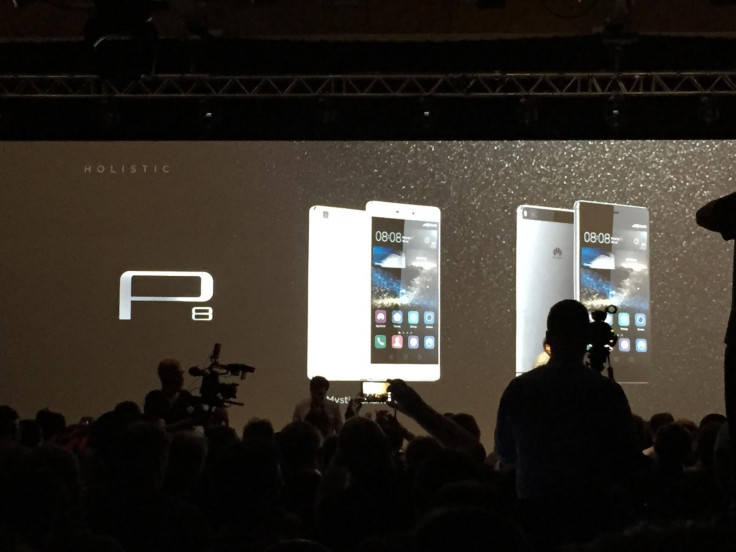Huawei P8 and P8max smartphones announced with iPhone-beating cameras

Huawei has unveiled a pair of new flagship Android smartphones, one aimed at the mass-market, and the other, much larger handset for the "phablet" market falling between large smartphones and small tablets.
Called the P8 and P8max respectively, the smartphones were announced at a global media event in London on 15 April. The P8 features a 5.2in Full HD screen at 424 pixels per inch (ppi), the the P8max boasts a 6.8in (326ppi) Full HD screen.
"Best in class" cameras
Both handsets run Android 5.0 Lollipop with the company's own Emotion 3.2 user interface over the top, and both have a 13-megapixel (MP) camera on the back and a 5MP on the front. Huawei has given both phones optical image stabilisation (OIS) for their rear cameras, which keeps the lens stable and shutter open for longer to create improved low-light images without resorting to the flash. Huawei says its OIS is "best in class" and twice as stable as the iPhone 6 Plus.
Unique to the smaller P8 is a DSLR-level image signal processor. Impressive software features of the P8's camera includes the ability to shoot photos with deliberately blurred car headlights, or star tracks, both of which are usually only possible with an SLR camera with a long exposure time.
The P8 follows in the footsteps of the P6 and P7 handsets released by Huawei over the last two years, and continuing their trend, the new model is thin at 6.4mm (for context, the iPhone 6 is 6.9mm) and weighs 144g, 15g more than the Apple flagship.
Huawei was keen to point out how the P8 has the same footprint as the iPhone 6, but has a screen 0.5in larger, thanks to sporting thinner bezels. The company says the P8 has the largest screen-to-body ratio of any phone in this sector of the market. It also had a dig at Apple and Samsung for their rear cameras, which protrude from the Galaxy S6 and iPhone 6, while the P8 has a completely flat steel back.
Knuckle Sense Technology
In a slightly bizarre move, Huawei announced what it claims to be the next major breakthrough since multitouch on the original iPhone. Eight years since multitouch changed smartphone design forever, Huawei has come with with Knuckle Sense Technology, where the screen can be interacted with my tapping your knuckled on it, or dragging them across the screen. No, we aren't sure why either.
With a focus on design and engineering, Huawei showed off the P8's unibody chassis, which has chamfered and polished edges, similar to those of the iPhone 5s. The P8 will be available in white, black, grey, and gold, while the P8max will be offered in gold, champagne, and titanium grey.
Both models of P8 are powered by Huawei's own Kirin 930 processor, which is an octa-core chip running at 2.0GHz and sporting 3GB of RAM.
Huawei has given the regular P8 16GB of storage, while the phablet P8max gets up to 64GB. Both handsets have a microSD slot which accepts cards up to 128GB.
Battery life for the regular P8 is stated at one full day for heavy users, and 1.5 days for average users - figures Huawei claim are higher than both the iPhone 6 and Samsung Galaxy S6. A massive 4,360mAh battery in the P8max means users will see two full days of regular use, Huawei claims.
A nano coating means the P8 is waterproof without the need for ugly covers over the ports.
Finally, Huawei will sell alongside the P8 a cover which has its own e-ink display, from which you can read ebooks without draining the phone's battery life and without straining your eyes by looking at its screen.
The P8 starts at €499 (£358) for 16GB of storage and €599 for 64GB. It will initially be available in more than 30 countries including China, Columbia, France, Germany, Mexico, Spain, South Africa, Turkey, UAE, and the United Kingdom.
The Huawei P8max also comes in two versions; the 32GB model is €549 and the 64GB version is €649. It will be available in the same countries at launch.
© Copyright IBTimes 2025. All rights reserved.






















